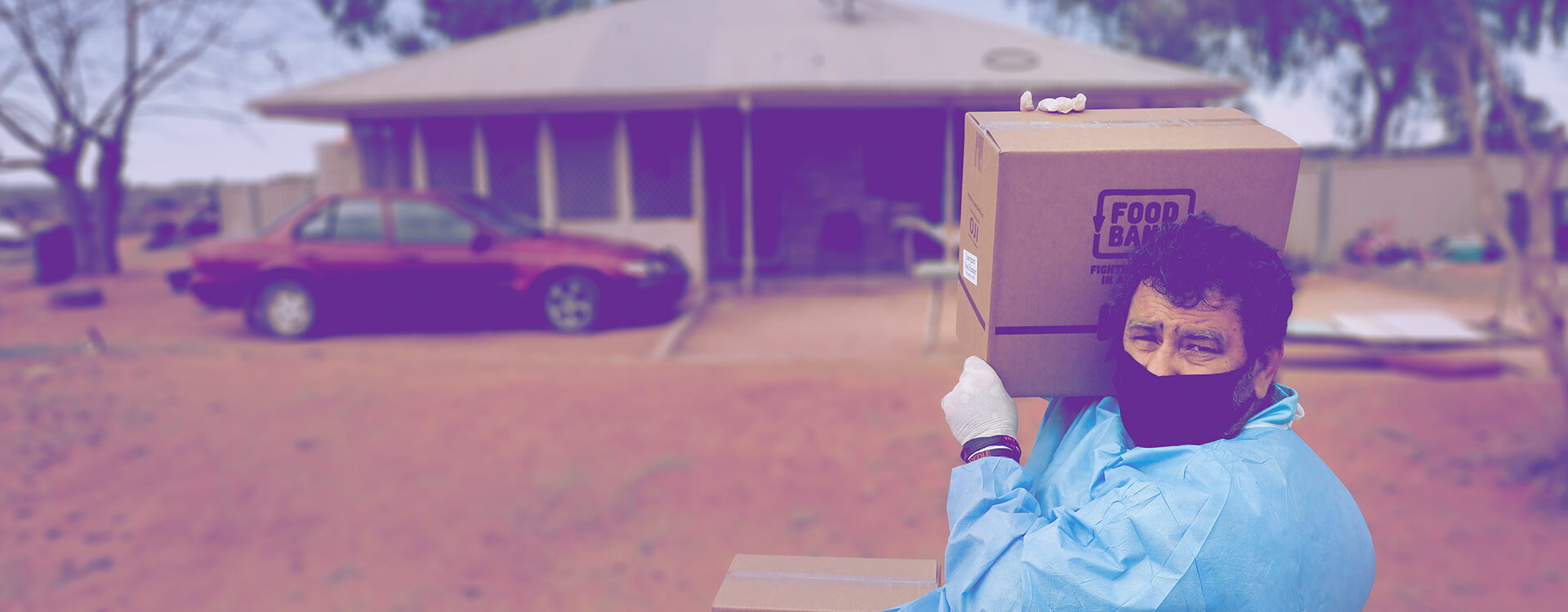
FOODBANK HUNGER REPORT 2021
The reality of the food crisis in Australia

Why this report matters
The key findings in this report are indeed confronting, but we cannot fix a problem we don’t understand or even acknowledge.
Message from Brianna Casey, Foodbank Australia CEOFor a decade, the annual Foodbank Hunger Report has been describing the growing prevalence of food insecurity in Australia. The first report in 2012 was met with disbelief that there were people going hungry in ‘the lucky country’.
Year-on-year the awareness of the issue has grown, but so too has the problem. What has become clearer since this report was first published is the diversity of people touched by the issue. Food relief is not only being sought out by those who are homeless and unemployed, but working families, refugees, single parents, school leavers, First Nations People and many more.
When the global pandemic hit, it radically transformed our day-to-day reality, bringing unexpected challenges and suffering and exacerbating existing societal issues. Those already struggling have been hit even harder, while others find themselves fighting to pay the bills, feed their family and keep the lights on for the first time in their lives.
Every day brings a new set of challenges, but Foodbank is determined to continue doing what we do best, not just during the crisis phase, but well into recovery, on top of our better-known role of providing food relief to those struggling with poverty and inequality in ‘normal’ times.
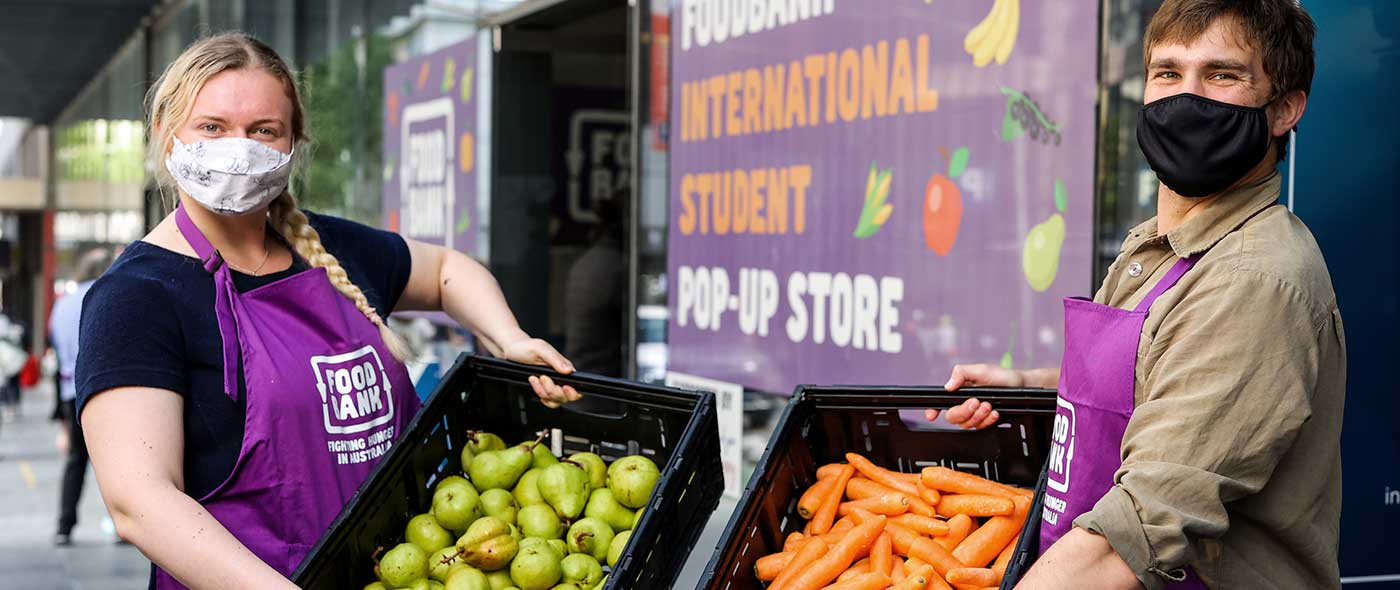
One positive we can draw from the current situation is that the reality of food insecurity is no longer hidden. The fallout of the pandemic has driven home to all of us how easy it is for people to become vulnerable. We have seen firsthand people who have lost their jobs and income or have been caught in a hard lockdown unable to access the food they need for their families and this is leading to a welcome sense of empathy towards those who are vulnerable for any number of reasons.
It will be a long road to recovery, but we must not forget the new perspective we have gained through this pandemic. The circumstances that put people into food insecurity before the virus – poverty, family and domestic violence, under-employment and housing affordability to name a few – will still be with us and food relief will remain a critically important part of the solution.
The key findings in this report are indeed confronting, but we cannot fix a problem we don’t understand or even acknowledge.
Brianna Casey
CLOSE

ONE IN SIX ADULTS
in Australia haven’t had enough to eat in the last year
More than one in six Australian adults can be categorised as severely food insecure.
This means they experience multiple disruptions to their eating patterns and often have to reduce their food intake.

1.2 MILLION CHILDREN
have gone hungry in the last year
1.2 million children are living in food insecure households.
More than two in five severely food insecure parents (43%) say their children go a whole day without eating at least once a week.
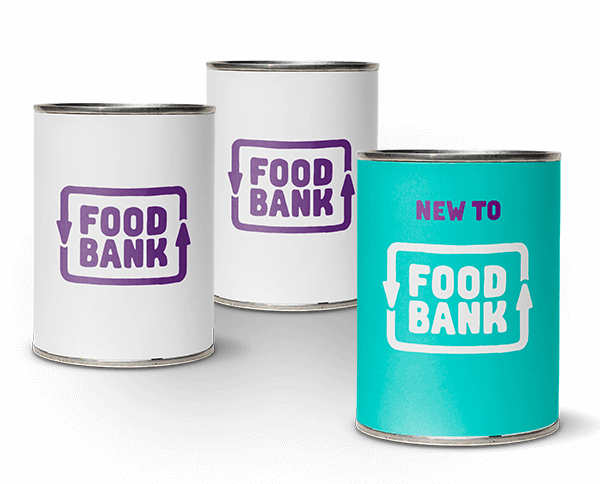
ONE IN THREE PEOPLE
struggling to meet their food needs are new to the situation
While food insecurity is a long-term experience for many, COVID-19 has caused others to experience it for the first time.
More than one in three Australians (38%) who were food insecure during the last year had never experienced food insecurity prior to the pandemic.
About this report
The Foodbank Hunger Report is an annual spotlight on food insecurity in Australia bringing together Foodbank’s research and on-the-ground information and observations.
Learn moreThe Foodbank Hunger Report provides a snapshot of the prevalence and depth of the issue of food insecurity, as well as insights into the day-to-day experience of people living with this fundamental vulnerability. Whilst there are many contributors to food insecurity in Australia, COVID-19 has continued to rage during the past 12 months so, as it was last year, it is a major theme of this report.
Much of the report is informed by a national survey conducted between 1 and 28 July 2021 involving more than 2,877 Australians representing the Australian population, more than 1,000 of whom had experienced food insecurity at some point in the last 12 months. The details of this survey can be found in the methodology.
Additional insights have been drawn from analysis informing the Foodbank Hunger Segments, as detailed in the methodology. These segments have been developed using a broad range of demographic, psychographic and geographic population-level data to determine the key variables influencing food insecurity.
Records of requests for food relief via Infoxchange’s national Ask Izzy website were also analysed both before and during the reporting period, along with Foodbank’s own food and grocery distribution statistics and operational intelligence.
CLOSE
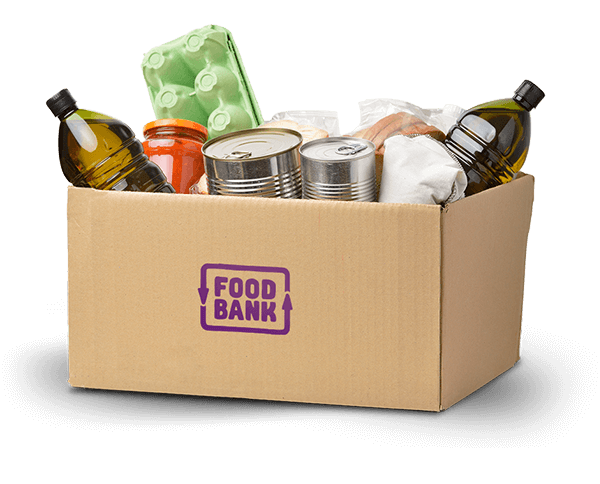
Foodbank provides food relief to more than a million people each month
Foodbank provides food relief to over 1 million people per month but more than one in three food insecure Australians (38%) are not seeking food relief.
Social stigma and lack of accessibility are the largest barriers to them getting the assistance they need.
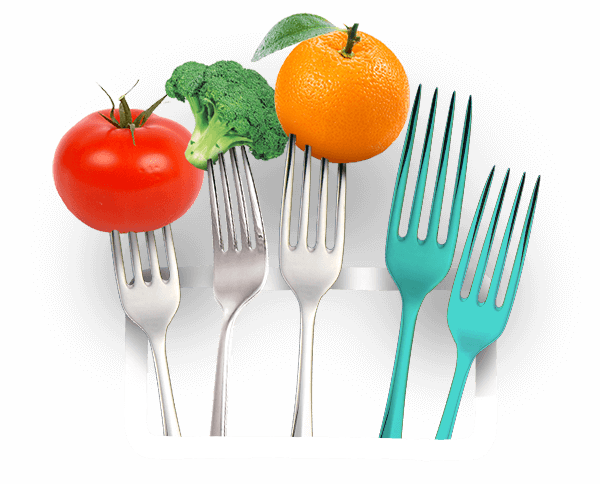
Two in five people seeking food relief do not get enough for their household’s needs
In spite of Foodbank’s efforts demand for food relief is still not being met.
More than two in five food insecure Australians (46%) require more than they currently receive to meet their household’s needs.
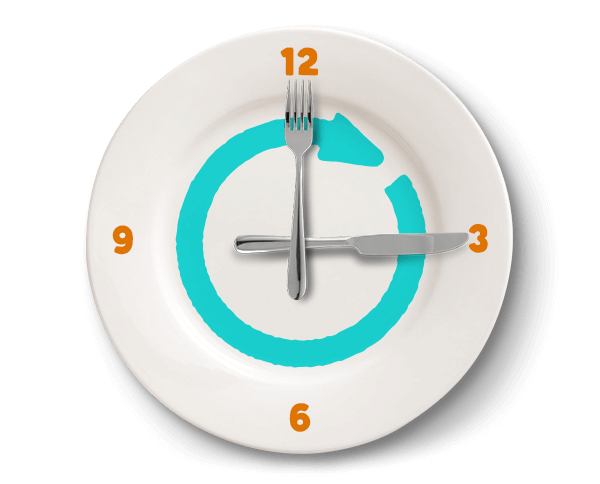
More than half of people severely impacted by food insecurity go a whole day every week without eating
One in six Australians (17%) can be categorised as being severely food insecure.
This means they have multiple disruptions to their eating patterns and are forced to reduce their food intake.
More than half (57%) go a whole day without eating at least once a week.
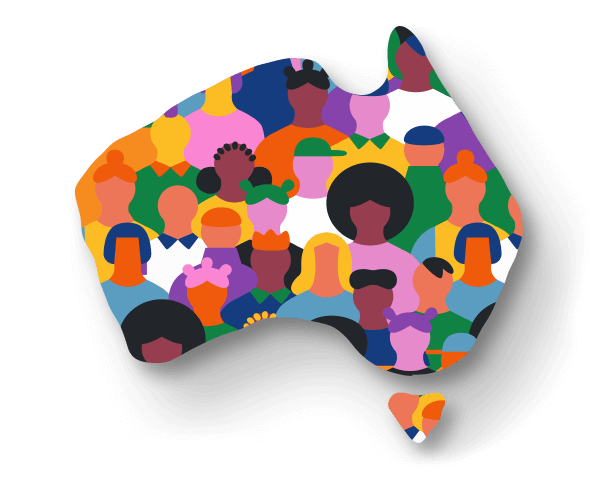
Uncertain access to food affects Australians from all walks of life
Food insecurity is not restricted to the obviously vulnerable groups in the community such as people sleeping rough.
A demographic summary of food insecure Australians shows that it affects people of every age, living alone, in families and in groups. It affects people in the cities, regional and remote areas.

64% of food insecure Australians have a job
Food insecurity affects more people in jobs than those who have no work.
The biggest reason why people do not have enough food for themselves and their families and cannot afford to buy more is unexpected expenses or large bills.

One in six Australian adults haven’t had enough to eat in the last year.
On top of this, 1.2 million children have gone hungry during the same period.
Read the research findingsIf a person is food secure, they have physical and economic access to sufficient, safe and nutritious food that meets their dietary needs and food preferences for an active and healthy life (United Nations Food and Agriculture Organisation). More than one in six Australian adults can be categorised as severely food insecure which means they experience multiple disruptions to their eating patterns and often have to reduce their food intake. On top of this, 1.2 million children are experiencing severe food insecurity, sometimes going whole days without eating.
Food insecurity is a spectrum of experience which ranges from having to reduce the quality, variety or desirability of your diet (moderately food insecure) to having multiple disruptions to your eating patterns and reduced food intake (severely food insecure).
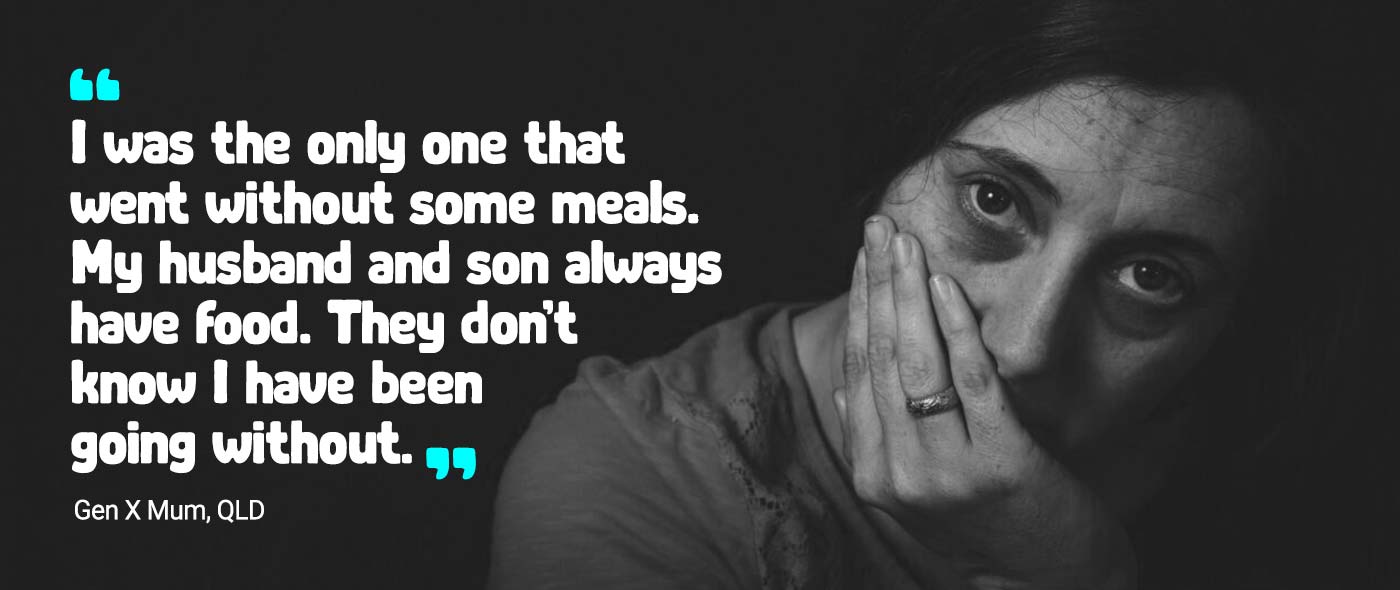
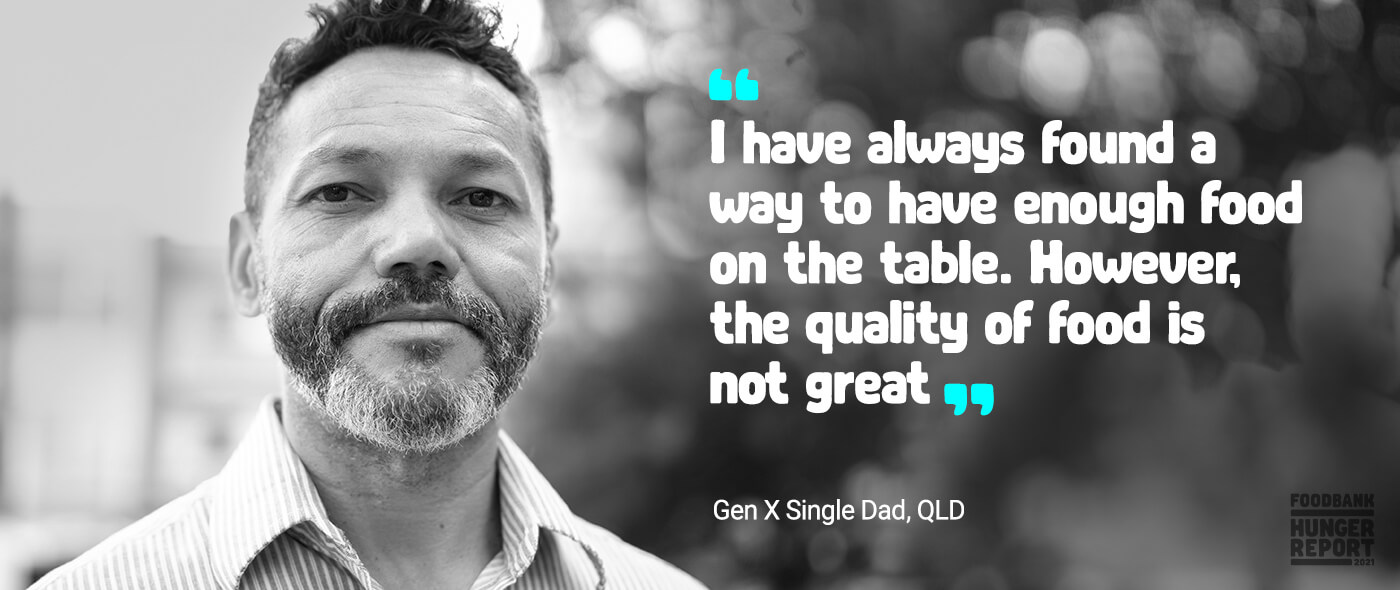
How many in Australia are food insecure?
To measure this we used a globally recognised United States Department of Agriculture Household Food Security Survey Module (USDA), as detailed in the methodology.
Population Sample (n=1,727)One in six Australians (17%) can be categorised as being severely food insecure and a further 11% can be categorised as moderately food insecure. Combined these two categories represent a quarter of Australian adults (28%) who are categorised as food insecure.
How often does lack of access to food occur?
To determine this, severely food insecure Australians were asked how often they are in the situation where they do not have enough food for themselves or other family members and they cannot afford to buy more food?
Severely food insecure Australians (n=671)What does hunger look like in Australia?
To measure this, severely food insecure Australians were asked how often various scenarios had occurred in the last 12 months.
Severely food insecure Australians (n=671)More than seven in ten severely food insecure Australians cut down on the size of their meals (73%) or skip a meal (76%) at least once a week. More than half (57%) go a whole day without eating at least once a week.
CLOSE

Food insecurity affects a broad spectrum of Australians from diverse backgrounds
Food insecurity is not restricted to the obviously vulnerable groups in the community such as homeless people and the unemployed. Read our summary of food insecure Australians.
The complete summaryA demographic summary of food insecure Australians shows that it affects men and women of every age, living alone, in families and in groups. It affects people in the cities, regional and remote areas and it affects more people in some form of employment than those who have none.
Download a PDF of the complete demographic breakdown here
What circumstances lead to food insecurity?
There are multiple reasons why people become vulnerable. Food insecure Australians were asked which of a variety of causes were the main reason why they did not have enough food for themselves or other family members and could not afford to buy more.
Food insecure Australians (n=1,150)The most common reasons why people report experiencing food insecurity are unexpected expenses or bill shock (35%) or overall low incomes (30%).
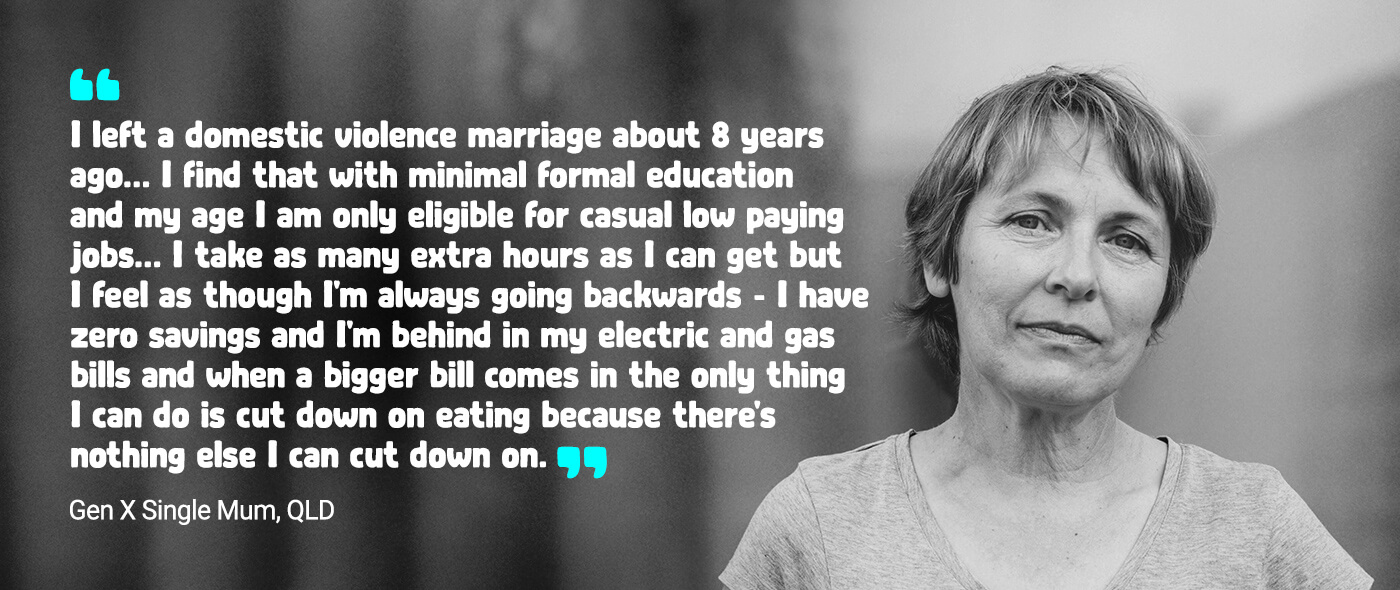
The Foodbank Community Clusters
There are often multiple factors working together to cause an individual or family unit to experience food insecurity. Many of these characteristics are common to a variety of people who share other traits enabling them to be grouped in terms of who they are and how they are impacted by food insecurity. Foodbank has developed ten Community Clusters, as detailed in the methodology, using demographic, psychographic and geographic information.

Remote First Nations
Young First Nations families (77%) living in regional and remote communities on very low incomes in overcrowded households.
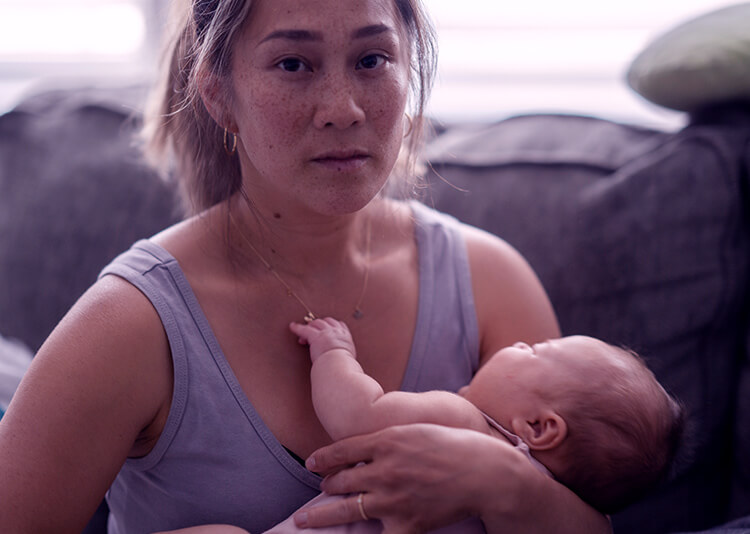
Battlers
Low-income urban families and single parents who are regularly reliant on government assistance to make ends meet.

Growing Families
Young urban families with blue collar or low-income jobs coping with the increasing costs of children’s schooling and other activities.

City Strivers
Well educated home leavers at the beginning of their careers struggling with the high cost of independent living on entry level incomes.

Risk Avoiders
Retirees and Empty Nesters living in regional communities struggling to manage increasing costs on fixed incomes.

Foundation Builders
Couples and young families with higher education and above average incomes contending with short-term financial shocks and cash flow issues.

City Strugglers
Older recently, or soon to be, retired empty nesters facing increasing costs on low fixed incomes.

Country Strugglers
Older couples and families living in regional communities on low household incomes with already extremely modest lifestyles.
Country Consolidators
Established regional households thinking about their retirement and the challenge of maintaining quality of life.


City Consolidators
Established families with higher asset wealth, some of whom own their own businesses and many with older children still at home contending with financial shocks and cash flow issues.
CLOSE

COVID-19 continues to impact food security in Australia
Eighteen months into the COVID-19 pandemic, life for Australia’s most vulnerable has not gotten easier. In fact, the combination of multiple lockdowns, further job losses and rollback of government assistance has made things more difficult than ever.
Read more on the effects of COVID-19How has COVID-19 impacted food insecurity?
Food insecure Australians were asked if they had ever experienced food insecurity before COVID-19.
Food insecure Australians (n=1,150)While food insecurity is a long-term experience for many, COVID-19 has caused others to experience it for the first time. In fact, more than one in three food insecure Australians (38%) during the last year had never experienced food insecurity prior to COVID-19.
Government assistance, particularly the JobSeeker and JobKeeper payments, has been important in providing a safety net for vulnerable people in the midst of the pandemic. Between March 2020 and March 2021, 54% of food insecure Australians were accessing government assistance. Among those categorised as severely food insecure, the proportion is even higher (64%).
In June 2020, 13%* of Australians answered yes to the question “’In the last 12 months, was there any time when you or anyone in your household ran out of food and did not have enough money to purchase more?”. This represented an average in a year that saw dramatic highs and lows in response to the ever-changing impacts of COVID-19. That said, this was a significant decline from the previous year, when 21% of Australians answered yes to the same question. It was an indication that, when vulnerable people have more money at their disposal, their food security immediately improves. A year on, however, with assistance having been dramatically wound back, food insecure Australians are once again finding it hard to cope with the number of people answering yes to the question back up to 18%, equal to pre-pandemic levels.
*In order to present longitudinal comparisons, the percentages reported in relation to the question ‘’In the last 12 months, was there any time when you or anyone in your household ran out of food and did not have enough money to purchase more?” are based on raw survey results. Unlike other statistics presented in this report, these figures have not been weighted according to age group, segment and USDA category and should, therefore, not be compared to other results in this report.
Is the situation getting more or less challenging?
We asked food insecure Australians if they were finding it more or less challenging to make ends meet compared to the same time last year.
Food insecure Australians (n=1,150)Three in five food insecure Australians (60%) are finding it more challenging to make ends meet than this time last year while 40% are finding it less challenging.
How are people coping since the removal of Government support?
Food insecure Australians who access JobSeeker and JobKeeper payments were asked how they are coping since these have been wound back.
Food insecure Australians who accessed JobSeeker and JobKeeper payments n=243Of those who accessed JobSeeker and JobKeeper payments during the period between March 2020 and March 2021, almost half (48%) say they are not coping well at all since the payments have been wound back.
Centrelink searches on the Infoxchange Ask Izzy website increased significantly in March 2020 as Australians started to experience the effects of the pandemic. In March 2021, however, online searches for financial assistance other than Centrelink were much higher than last year, indicating that many Australians are still in need of help.
Ask Izzy online searches for assistance
CLOSE

Even those seeking food relief are not getting the full help they need
Demand for food relief is not currently being met, with more than two in five food insecure Australians (46%) requiring more than they currently receive to meet their household’s needs.
Read more about items most needed
Food relief provides many Australians with the assistance they need to get back on their feet. The average household receives enough food to make 7.8 meals per week but for 46% of them, there is still a gap between what they receive and what they require to meet their needs.
Are people getting the food relief they need?
Those seeking food relief were asked what they had received compared to what they would have liked to get when seeking food relief.
Those seeking food relief (n=683)There are also some differences between the types of food and groceries provided by charities and community groups and what food relief recipients would like to see offered. The items that food insecure Australians would like to see charities and community groups provide more of include foods for special dietary needs (43%), personal care items (40%) and household cleaning products (36%).
CLOSE

Methodology
Read the details hereSurvey of Australians experiencing food insecurity
An online survey was conducted with Australians aged 18 years and older representative of the general population and accessed via a commercial market research panel, to understand the prevalence and experience of food insecurity in Australia. The survey was designed and deployed by McCrindle and was in field between 1 and 28 July 2021. The survey was conducted in four stages, gathering a total of 2,877 responses.
- Stage 1: A panel of 1,005 Australians (nationally representative by state, age and gender) were asked a set of questions to determine whether they had experienced food insecurity in the last 12 months. These questions were taken from the United States Department of Agriculture (USDA) 18 question Household Food Security Survey Module (HFSSM). Any respondents who were categorised has being ‘food secure’ were screened out of the survey. 274 Australians were categorised as being moderately or severely food insecure.
- Stage 2: Following stage 1, the survey was re-launched to top up responses in certain states (New South Wales, Victoria, Queensland and South Australia) to a minimum of 380 each, ensuring an even spread across gender and age groups. Data for each state (collected in stages 1 & 2) was used to inform statistics about the prevalence of food insecurity in each state.
-
Stage 3: The survey was re-launched a third time to top up the sample of Australians experiencing food insecurity. A total of 674 Australians (including those from stages 1 and 2), were then asked about their experience of food insecurity.
-
Stage 4: The survey was re-launched a fourth time to gather additional responses from Australians experiencing food insecurity living in New South Wales, Victoria, Queensland and South Australia. A total of at least 380 responses was gathered from each of these states in order to ensure robust results for these states.
| Fieldwork stage | Purpose | Total responses | Moderately or severely food insecure | Responses used in final food insecure sample |
| Stage 1 | Determine prevalence of food insecurity in Australia | 1,005 | 274 | 223 |
| Stage 2 | Top up responses in NSW, VIC, QLD & SA to determine prevalence of food insecurity in each state | 722 | 189 | 187 |
| Stage 3 | Top up sample of food insecure Australians to understand experience of food insecurity in Australia | 445 | 264 | 264 |
| Stage 4 | Top up responses from food insecure Australians in NSW, VIC, QLD & SA to understand experience of food insecurity in each state | 705 | 476 | 476 |
| TOTAL | 2,877 | 1,203 | 1,150 |
NB: In stages 3 and 4, responses were gathered from Australians experiencing marginal, moderate or severe food insecurity. Those who are considered as food secure or marginally food insecure have not been counted in the final sample of food insecure Australians which accounts for the difference between total response numbers (n=2,877) and those used in the final food insecure sample (n=1,150). The difference between the number of Australians who are moderately or severely food insecure (n=1,203) and the numbers used in the final sample of food insecure Australians (n=1,150) are due to respondents not completing the survey. Only completed responses have been used in the final sample.
Data weighting
In order to maximise the responses gathered throughout the fieldwork process, and to ensure data is representative of the Australian population, data from different fieldwork stages has been combined and weighted using the following methodology:
Data has been weighted to the 2021 forecasted adult population in each segment, by age group and USDA category. The following population figures were used to weight the data:
2021 population estimates in each cluster by age group
| Segment | 18-34 | 35-44 | 45-54 | 55-64 | 65+ | Total |
| City Strugglers | 401,006 | 291,629 | 264,641 | 263,927 | 463,981 | 1,685,183 |
| Growing Families | 857,966 | 532,770 | 418,699 | 354,334 | 431,312 | 2,595,080 |
| Battlers | 405,921 | 235,400 | 195,789 | 171,942 | 230,039 | 1,239,091 |
| Foundation Builders | 1,541,949 | 912,942 | 733,004 | 587,276 | 733,839 | 4,509,010 |
| City Consolidators | 787,394 | 543,340 | 556,503 | 479,418 | 729,562 | 3,096,218 |
| City Strivers | 403,269 | 152,101 | 105,698 | 86,788 | 109,284 | 857,140 |
| Country Consolidators | 596,532 | 430,853 | 441,910 | 425,283 | 561,192 | 2,455,770 |
| Country Strugglers | 419,970 | 263,358 | 266,017 | 300,462 | 506,021 | 1,755,828 |
| Risk Avoiders | 304,785 | 218,197 | 255,436 | 293,047 | 473,404 | 1,544,869 |
| TOTAL | 19,738,189 |
Measuring food insecurity
There are many ways to measure food security, with each approach varying in reliability(2) and survey time. The single item measure, which asks “In the last 12 months was there any time you or anyone in your household has run out of food and not been able to purchase more?”, is often used in population level surveys, including the National Health Survey and has been used to inform the prevalence of food insecurity in previous Foodbank Hunger Reports. This measure has, however, been criticised for its potential to underestimate the prevalence of food insecurity in Australia compared to other, more comprehensive measures.
The gold standard and most commonly used measure of food security globally is the United States Department of Agriculture (USDA) 18 question Household Food Security Survey Module (HFSSM)(3). Although this measure takes longer for respondents to complete, it is more comprehensive, and is generally considered to be more reliable(2). Rather than just separating respondents into food secure and food insecure, the USDA module also allows for more nuance, grouping respondents into four categories:
Food Security
1. Food Secure: no limitations to accessing food
2. Marginal food insecurity: anxiety over food sufficiency or shortages but little to no changes in diet or food intake
Food Insecurity
3. Moderate food insecurity: reduced quality, variety or desirability of diet but little to no reduction in food intake
Hunger
4. Severe food insecurity: multiple disruptions to eating patterns and reduced food intake (4)
For the first time, the Foodbank Hunger Report’s prevalence of food insecurity is based on the USDA 18 question module, rather than the single item measure. All 18 questions were posed in our survey and the required protocols were followed to score and analyse the results.
Foodbank’s Community Clusters
The Foodbank Community Clusters have been developed by The Art of More. A wide number of data sources were analysed to understand the diversity of demand indicators, the main sources being the 2016 Census, DSS Support Services and The Vulnerable Australia Model (developed by The Art of More) which assesses and integrates over 70 data sources to develop an understanding of vulnerable communities.
A number of modelling techniques were undertaken on the data sources to identify and forecast food insecurity across Australia by location, volume and an estimate of impacted Australians. A gravity model was used to allocate Foodbank’s supply data geographically. Decision tree analysis (CHAID) was employed to then identify the key variables driving the demand allocated by the gravity model.
K Means Cluster Analysis was then applied to define ‘community clusters’ – the unique relationships between different demographics of food insecure people and the key variables shown to influence demand (i.e. the demand drivers) to provide a more nuanced view. With this understanding, the cluster were mapped to provide a view of the volume and degree of food insecurity across Australia.
Ten core clusters were identified (six x metro and four x rural). Each cluster has its own distinct set of influences on food demand. The cluster allowed each group to be described (i.e. contextualised/humanised) along with the key demand drivers specific to that cluster, and in turn effectively communicate them both for internal and external purposes.
2) McKay, Haines & Dunn, Measuring and Understanding Food Insecurity in Australia: A Systematic Review, International Journal of Environmental Research and Public Health, 2019. 3) McKechnie, Turrell, Giskes & Gallegos, Single-item measure of food insecurity used in the National Health Survey may underestimate prevalence in Australia, Australian and New Zealand Journal of Public Health, 2018. 4) United States Department of Agriculture, Definitions of Food Security
CLOSE
Foodbank Australia would like to thank the following, without whom the Foodbank Hunger Report would not be possible:
The individuals who shared their lived experience, providing insights into the challenges they face in meeting their daily food needs. Please note all images associated with quotes are stock photos.
The hard working charities and community groups who are always prepared to take time from their vital work to respond to our requests for feedback and on-the-ground intelligence and observations.
McCrindle for undertaking the national survey of Australians and providing detailed analysis of this and other sources of data to provide the basis for this report.
The Art of More for developing The Community Clusters and also providing additional analysis to inform the demographic summaries in the report.
Russell Moverley for the design of the report.
TBST for the development of the report website.
Chris Pavlich/The Australian for providing the photo used for the report banner.
The Australian Government Department of Agriculture, Water and Environments’ financial contribution via the Fight Food Waste Cooperative Research Centre project: Enhancing Foodbank’s stakeholder engagement.
This report may be quoted for the purposes of research, discussion, recording keeping, education use and other public benefit, provided that such reproduction acknowledges Foodbank Australia.
Foodbank Australia Limited
ABN 58 073 579 254 PO Box 52, North Ryde NSW 1670 +61 2 9887 4144 admin@foodbank.org.aufoodbank.org.au
Facebook: https://www.facebook.com/FoodbankAus
Twitter: https://twitter.com/FoodbankAus
LinkedIn: https://au.linkedin.com/company/foodbank-australia
Instagram: https://www.instagram.com/foodbankaus
YouTube: https://www.youtube.com/user/FoodbankAustralia
CLOSE
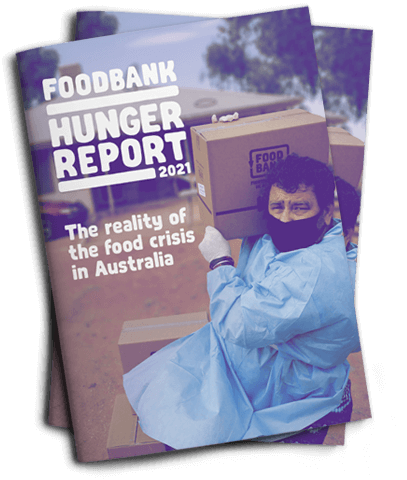
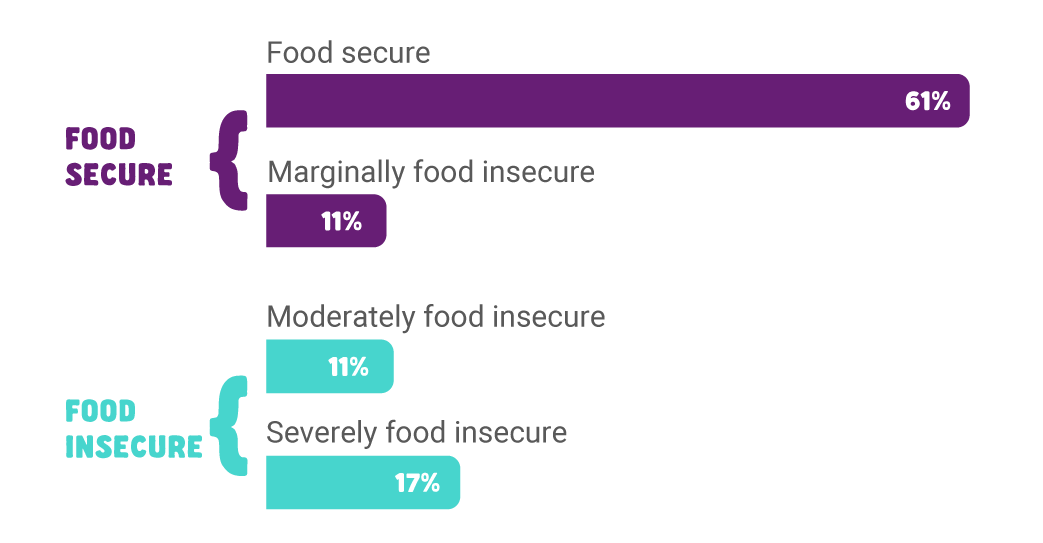
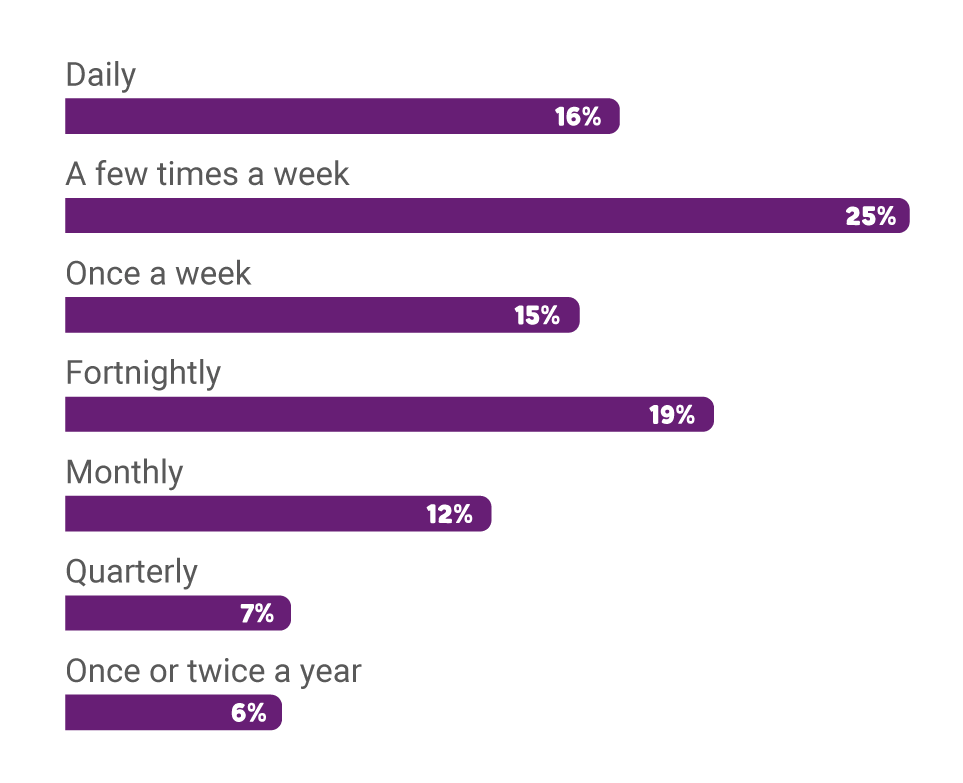
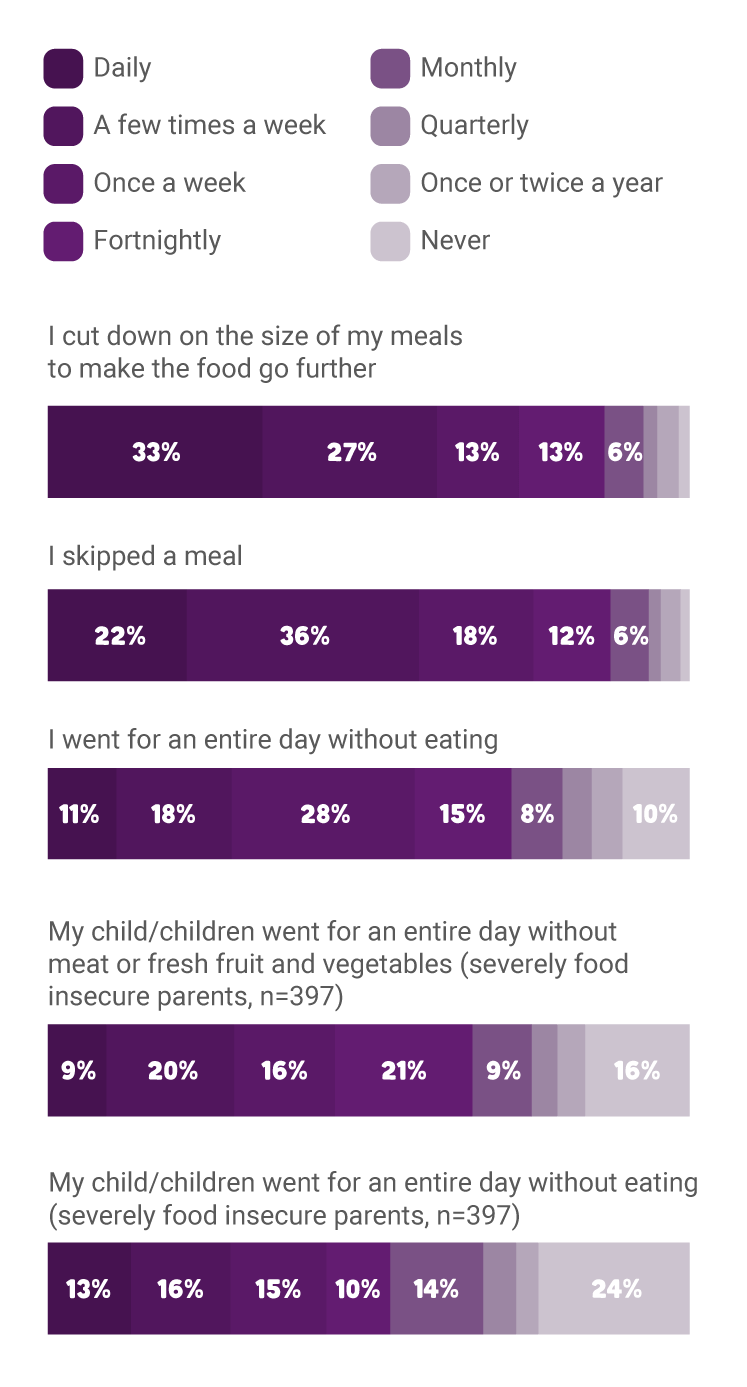
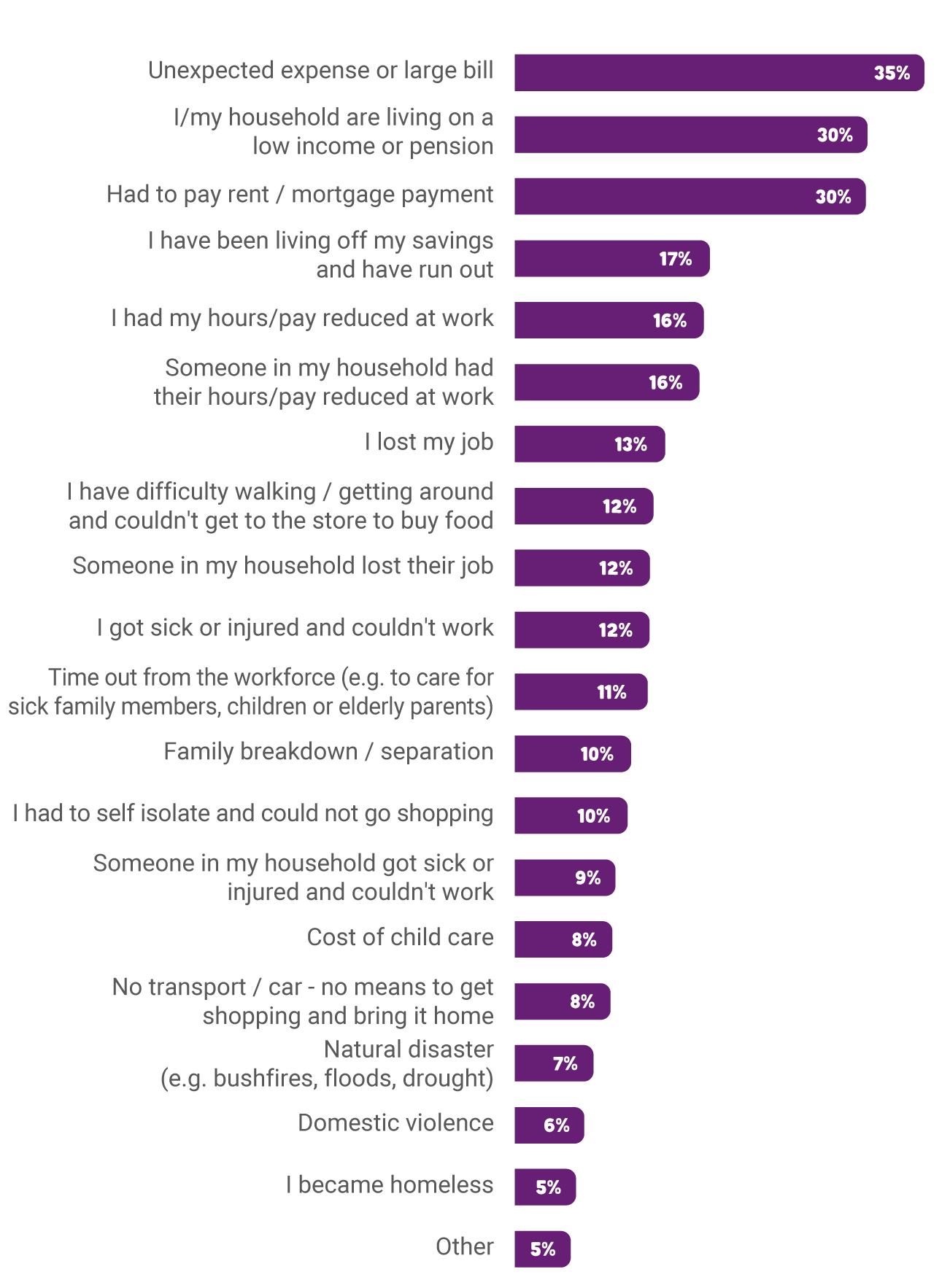
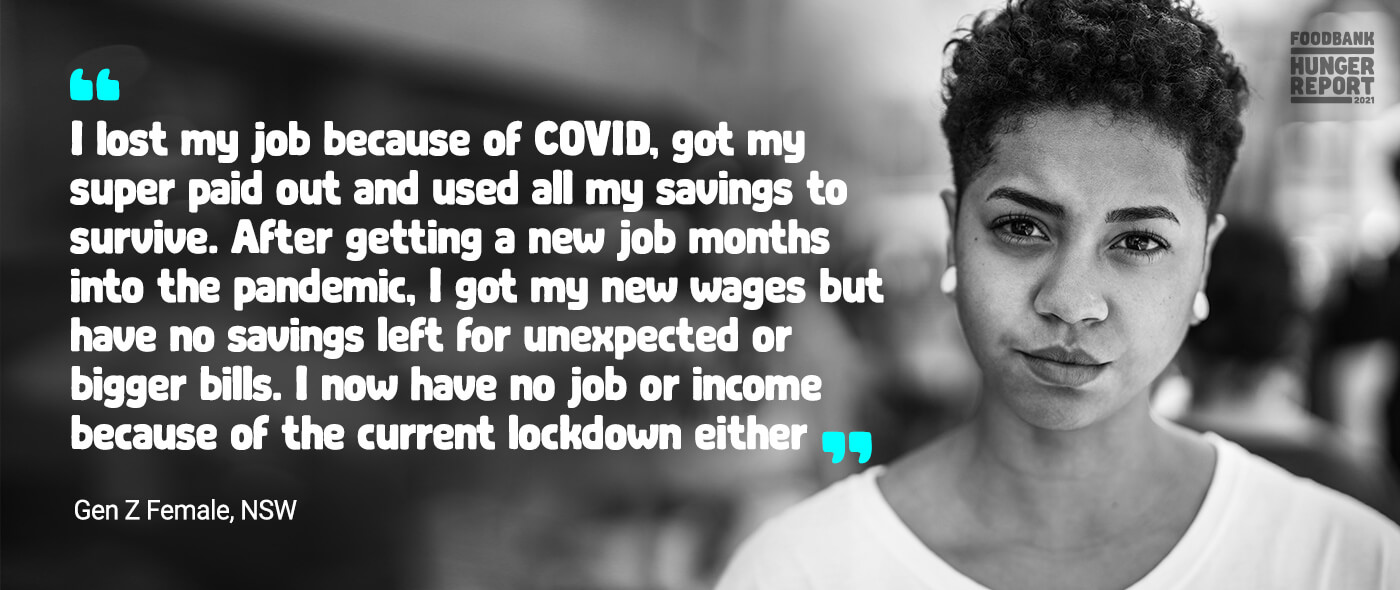

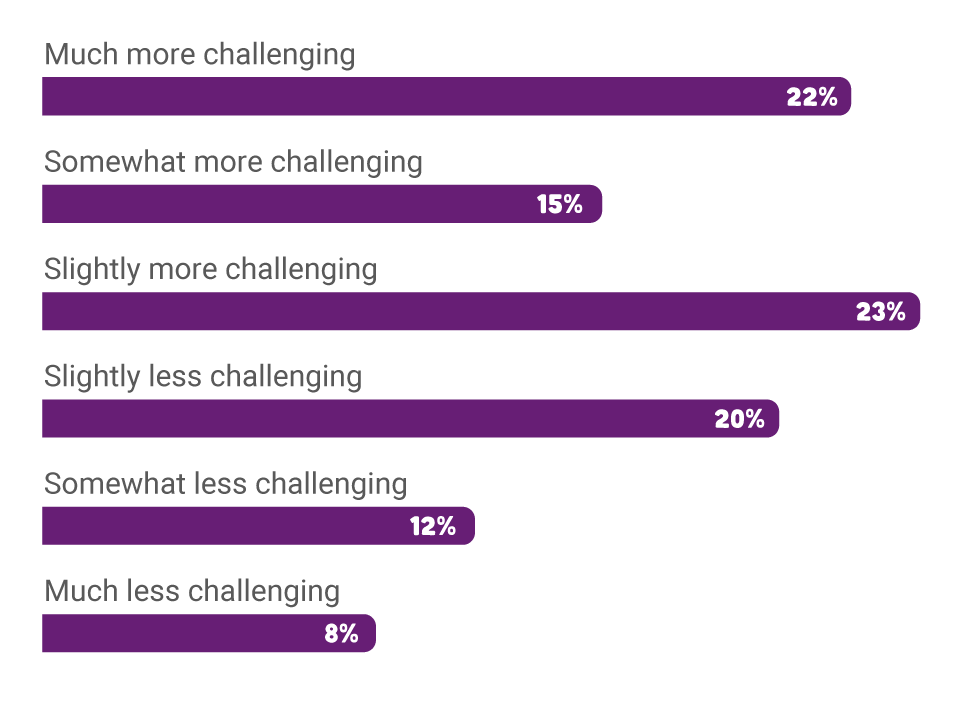
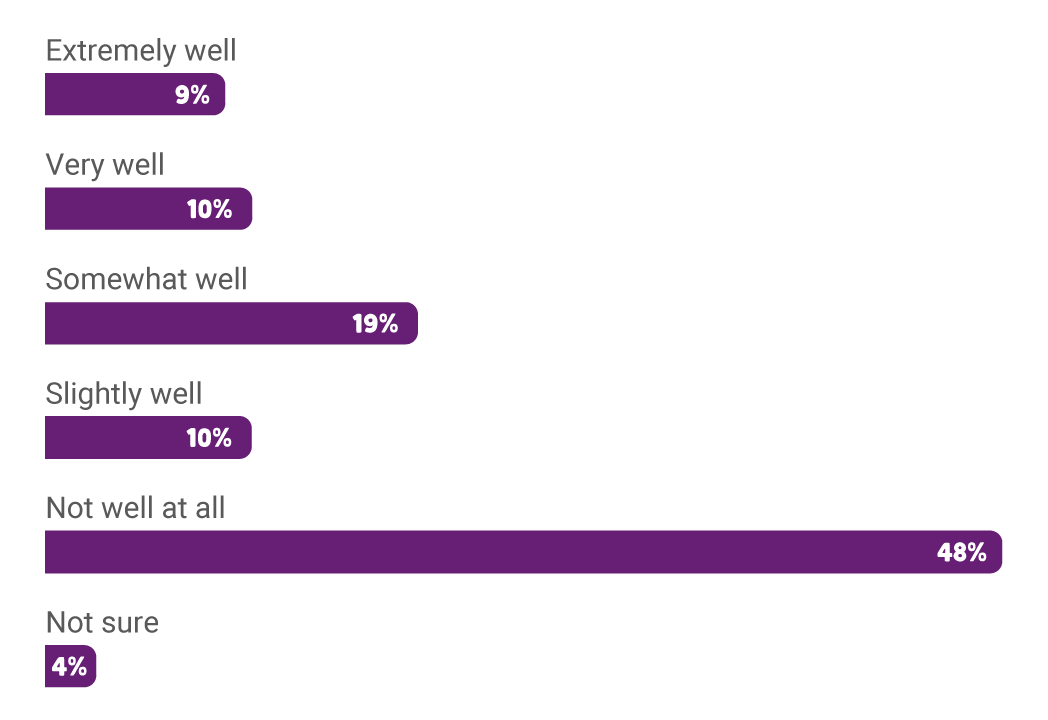
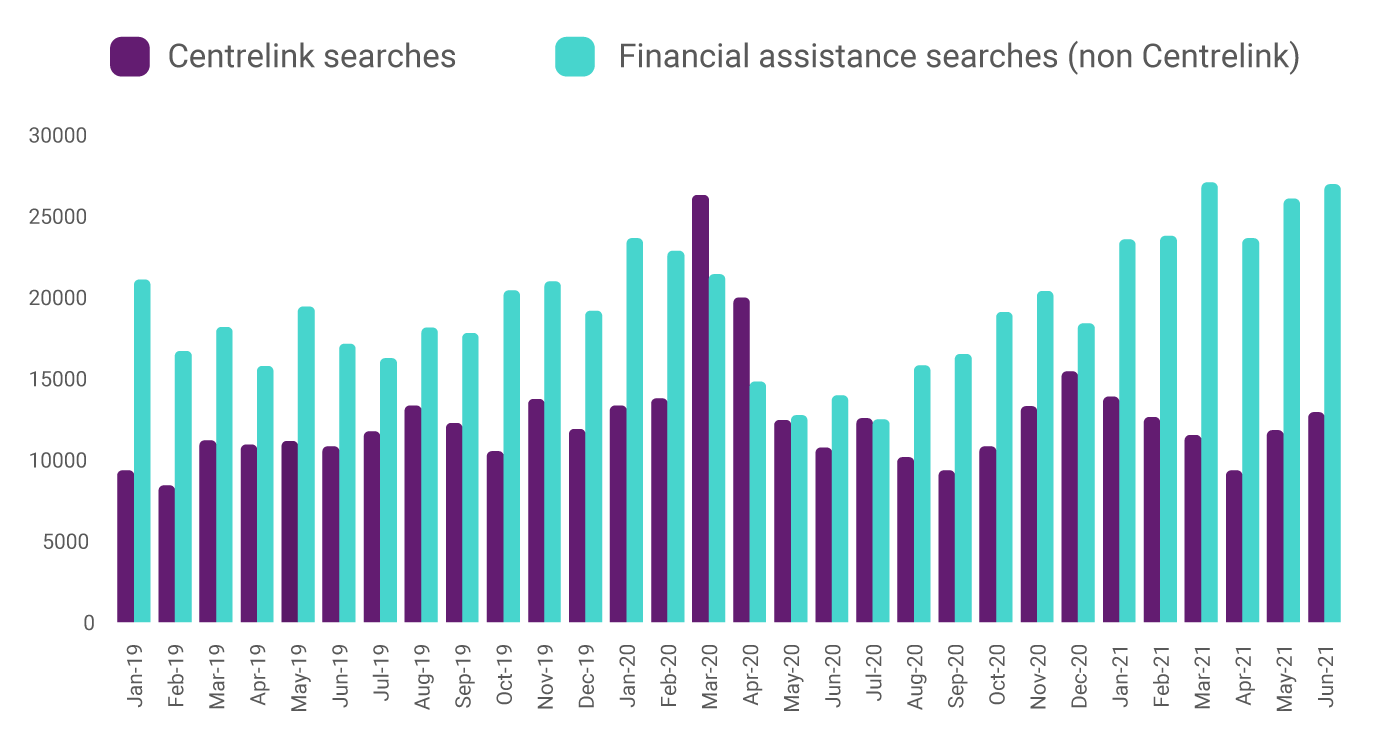
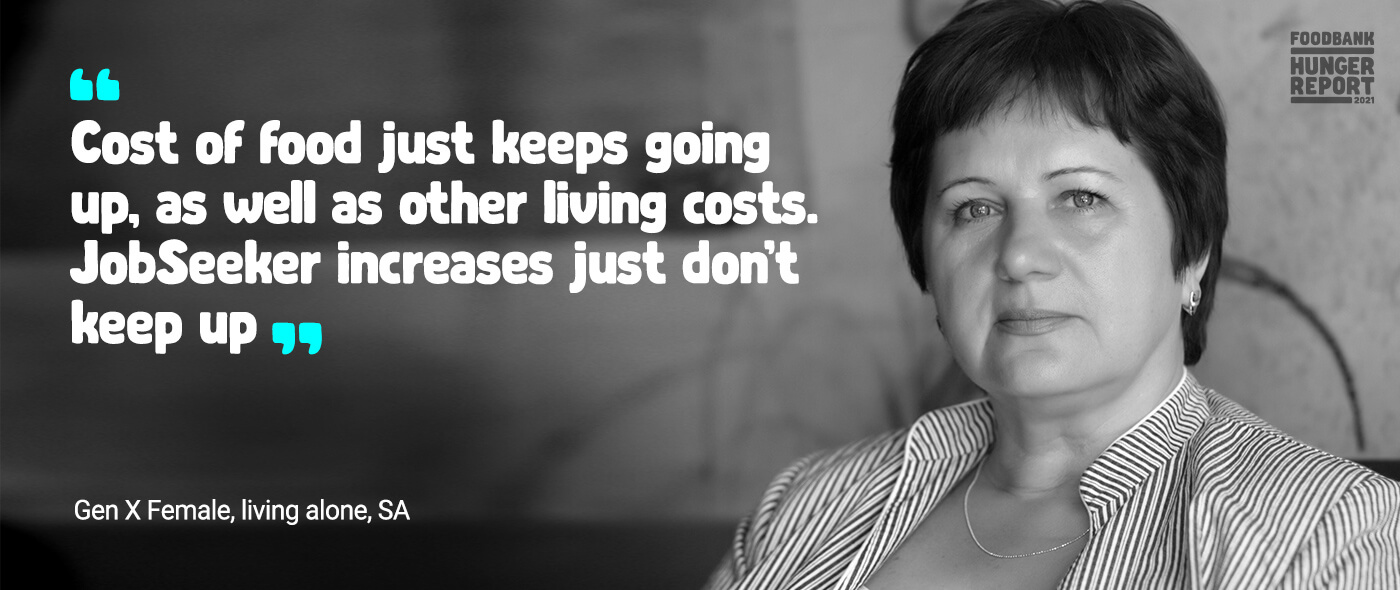
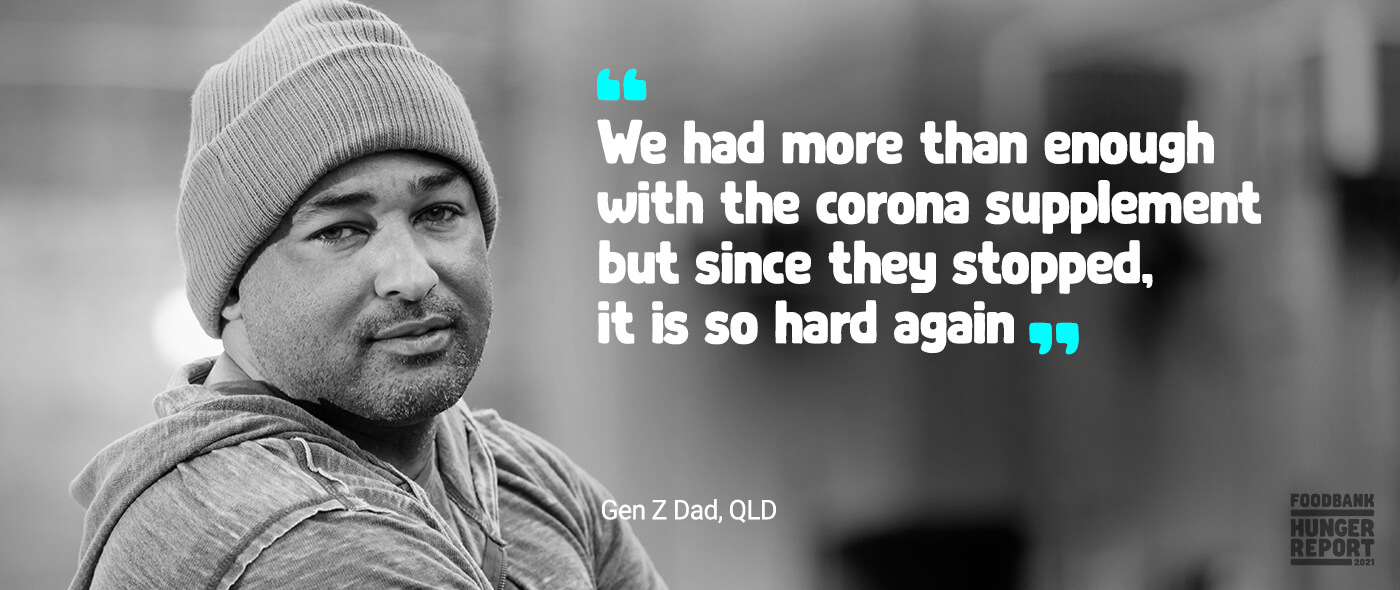
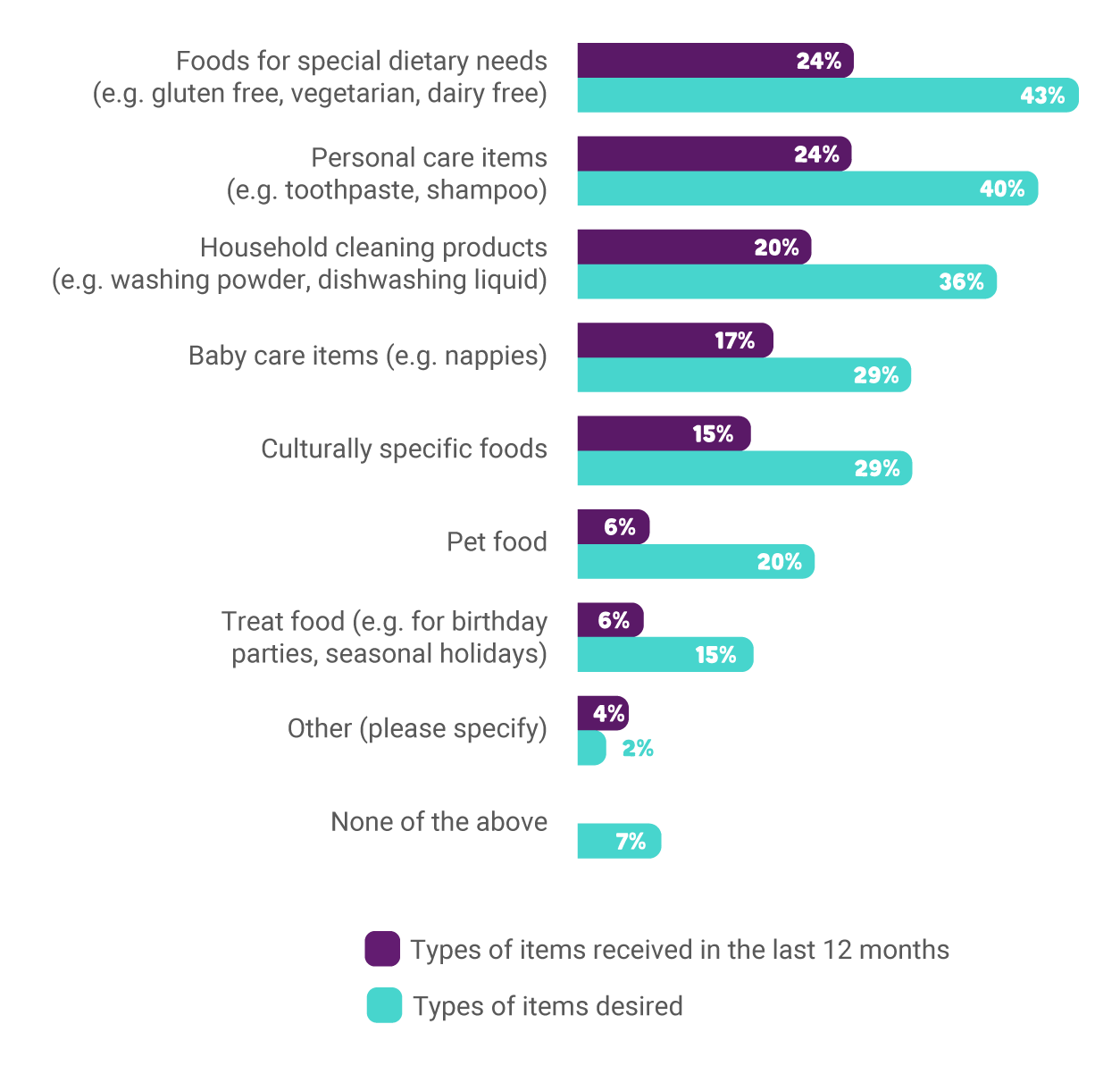
In spite of best efforts, food relief is still not reaching many Australians who need it
Two thirds of food insecure Australians are seeking food relief with more than half of them saying they are seeking it more often than last year. Social stigma and lack of accessibility are the largest barriers to those who are not seeking help.
Read moreHow often are people accessing food relief?
Food insecure Australians were asked how often they seek food relief from a charity or community organisation.
Food insecure Australians, n=1,150More than three in five food insecure Australians (62%) access food relief up from 59% pre COVID-19. Three in ten food insecure people (31%) are seeking food relief at least once a week.
Are people seeking food relief more frequently?
Food insecure Australians who seek food relief were asked if they are seeking it more or less often than last year. Food insecure Australians seeking food relief (n=683)With so many finding it difficult to make ends meet in 2021, more than half of those seeking food relief (58%) say they are seeking it more often than last year with a further 26% seeking it just as often. Reflecting this demand, last financial year Foodbank provided food relief to over 1 million people per month.
What are the barriers to obtaining food relief?
Food insecure Australians were asked about barriers to seeking food relief from a charity or community organisation.
Food insecure Australians (n=1,150)More than one in three food insecure Australians (38%), however, are not seeking food relief. Social stigma and lack of accessibility are the largest barriers to them getting the assistance that they need. More than one in three food insecure Australians (35%) are hesitant to seek food relief because they believe there might be people who need assistance more than they do. Embarrassment (32%) and shame (28%) can also cause food insecure Australians not to ask for help.
There are also practical barriers to seeking food relief such as not knowing of any charities close by (13%) or being unable to travel to a charity (12%). More than one in ten food insecure Australians (13%) do not seek food relief because they have already accessed all they are allowed to from a charity, highlighting the fact that there is more demand than charities and community groups are able to meet in some communities.
CLOSE